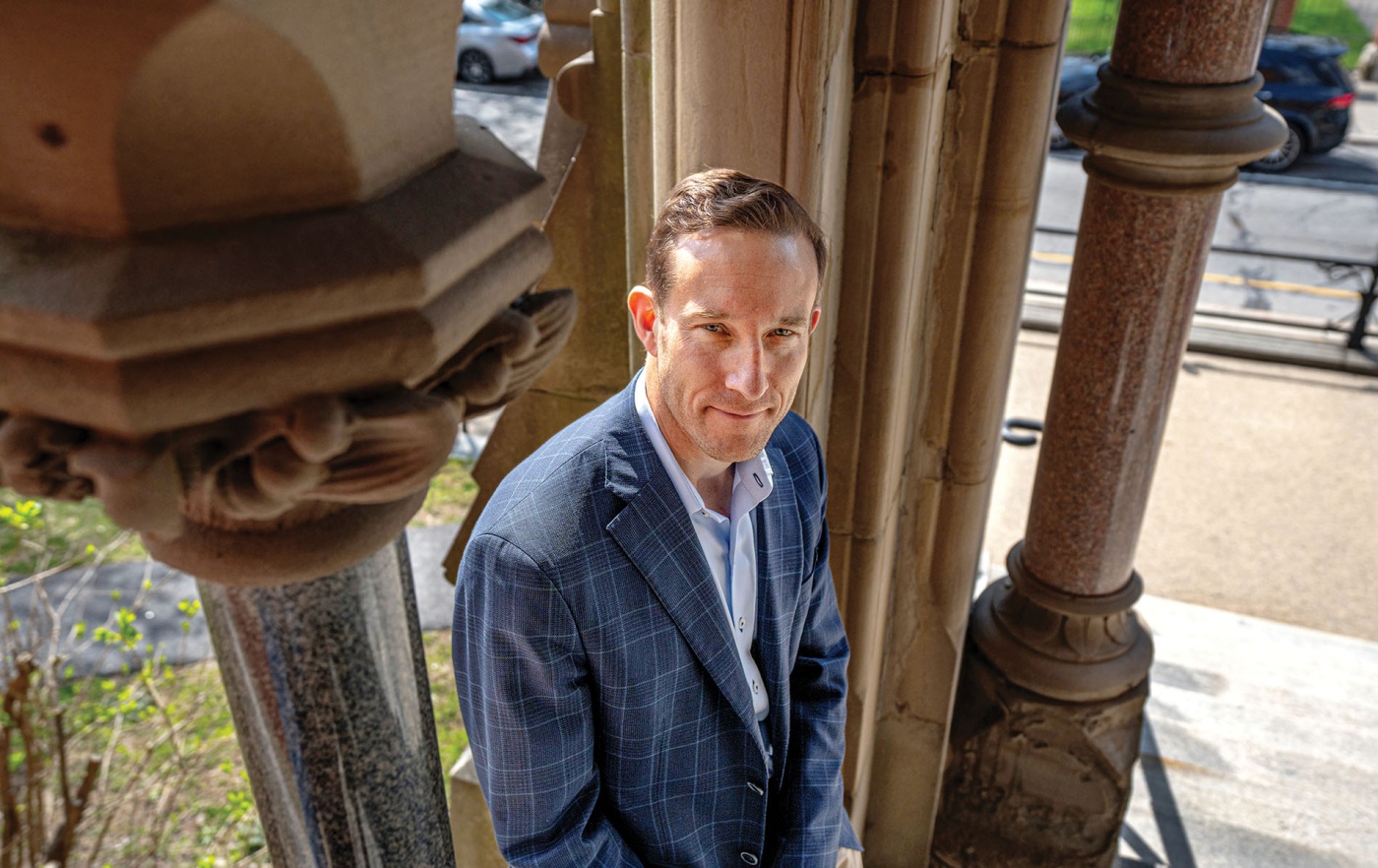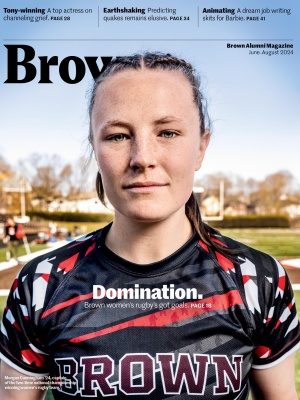Affirmative Action for Rich Kids
An economist’s research shows how Ivy-plus schools favor wealthy applicants.
The Ivy League and its brethren—the highly selective private institutions known as the
Ivy-plus—have always had the reputation of catering to the wealthy. But a 2023 study by Brown Economics Chair John N. Friedman reveals just how much of an advantage rich kids are likely to get when they apply to one of the eight Ivies or to Stanford, MIT, Duke, or the University of Chicago.
At a time when colleges are still working through their responses to the Supreme Court’s ruling declaring race-conscious admissions unconstitutional, Friedman and his colleagues at the Opportunity Insights lab, Harvard’s Raj Chetty and David J. Deming, found children from very wealthy families are getting a clear admissions boost. The net effect: Ivy-plus schools are effective at ensuring rich and powerful families stay that way since leadership roles in the U.S. are disproportionately filled by their graduates.
For instance, applicants from families in the top 1 percent (earning $611,000-plus a year) are twice as likely to be admitted to an Ivy-plus college as students from middle class families with similar test scores. And the study makes it clear that these rich kids are not more academically prepared. They’re getting accepted because they have an edge in three key indices: legacy preferences, athletic recruitment, and non-academic credentials like extracurriculars and recommendation letters—none of which predict how well students do afterward, according to Friedman’s study.
“The opportunity to attend these universities is something that puts students on the fast track toward these different leadership positions in society,” Friedman observes. “Our study is about placing upward mobility more at the core of what institutions are doing.”

The research was based on tax records, standardized test scores, and anonymized internal admissions records from Ivy-plus schools. Participating universities were promised anonymity, and the study does not give findings for any schools individually.
Private school advantages
Marco Lima ’27 attended a Providence high school that, he says, lacked funding and had only a small number of Advanced Placement classes.
“Many students had to work to support their families,” Lima says. “That’s maybe equal value to a student who has joined 10 different clubs. It shows dedication.”
Friedman’s study discovered that admissions offices are essentially biased against applicants from public schools, even when they are academically prepared based on their standardized test scores and academic course load. That’s because admissions officers give out higher ratings for non-academic traits like leadership potential to students who attended secular private high schools. Applicants from these schools—favored by the wealthy—are twice as likely to be admitted as those from affluent public high schools.
“There’s a cost to families of many of the extracurricular activities that students bring to their college application portfolios—excelling in those kinds of activities is dollar intensive and time intensive for families,” observes Annenberg Associate Professor of Education Policy Lindsay Page.
A second study from Opportunity Insights, published in January, found that standardized testing is a better way to predict how academically successful a student will be in college, in addition to after graduation. Brown announced in March that it will reinstitute admissions testing (see story, p. 9).
Legacies of wealth
Alex Shieh ’27’s father went to Brown and the freshman still wonders whether he got in because of his own accomplishments. “There’s sort of an imposter syndrome—nobody can walk up to me and say ‘you would have gotten into Brown if you hadn’t been a legacy,’” Shieh says. “I think that’s unfair. And when you have so many qualified people, you can’t be tipping the scales in favor of certain groups.”
Shieh, known on campus for his outspoken opposition to affirmative action of all kinds, believes admissions should be based entirely on merit.
Legacy preferences account for nearly half of high-income students’ admissions advantage, the study found. Legacies from 1-percent families are more than five times as likely to be admitted as students with comparable test scores.
Brown did not comment on whether Brown’s admissions results align with the study’s findings, but it is currently weighing whether to end legacy preferences. Brown admits fewer legacies than many other Ivies; a 2022 Harvard Crimson study, for instance, found that 36 percent of the Harvard class of 2022 were legacies. In Brown’s class of 2027, 8 percent are legacies, and the University is hearing from alums with strong feelings both for and against the practice, said spokesperson Brian Clark. “Brown enrolls exceptionally talented students from all socioeconomic backgrounds, and we have significantly strengthened our ability to do so over the last decade through a series of transformative new financial aid measures,” Clark says. An ad hoc committee of faculty and alumni has been studying undergraduate admissions “to ensure they uphold our commitments to academic excellence, access, and diversity,” he added; legacies “raise complicated questions about access, merit, and unearned advantage, and also about benefits like lifelong affinity, philanthropic support, loyalty, and community. Our goal is to reach a decision based on data and input from the community.”
Not so equitable athletics
Sophie Forstner ’24 played for a traveling lacrosse team in high school and realized the people who got recruited by colleges were not necessarily the best players. While there’s a belief that athletics provide a path to education for underserved youth, Forstner says this isn’t the situation in the Ivy League.
“I saw people who went to college for sports, not because of their skill, but because they were paying to go to the best tournaments,” Forstner says. “On a high school team, it’s so much about knowing the right people and going to the right events to be seen. It’s making even those sports that were previously seen as more accessible paths to college, much less accessible.”
Friedman’s study finds the nation’s richest families do indeed benefit from athletic recruitment.
An education studies concentrator, Forstner used her senior thesis to investigate the campus diversity impact of a 2020 initiative modestly reducing the number of varsity sports teams at
Brown. She found that for changes in athletics recruitment to expand the socioeconomic spectrum of students on campus, “you’d have to go a lot further, like cutting several hundred athletes.”
A less drastic way to deal with the issue could be for schools like Brown to consciously recruit less affluent players, Friedman argues. Brown is also looking at admissions for athletes.
Shaping Tomorrow’s Leaders
While Ivy-Plus students are a tiny part of the population—they number less than half of one percent of all Americans—they account for a disproportionate share of society’s leaders.
If admissions became a level playing field, around 145 less affluent but equally qualified students could be admitted to each Ivy-plus college, Friedman’s study claims. That’s about the same increase in socioeconomic diversity as race-conscious admissions offered.
“A handful of highly selective colleges have the capacity to change the backgrounds of society’s leaders meaningfully,” Friedman argues, “an outcome of particular significance given that leaders’ personal backgrounds and experiences shape decisions that influence many people’s lives.”





